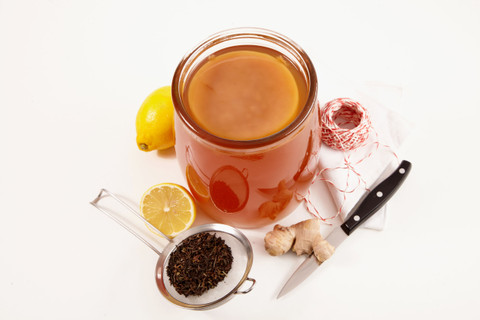Kombucha Brewing | 4 Common Mistakes and How to Reverse Them (Pt 1)
Posted by The CheeseMaker on 9th May 2016
When making anything worth consuming at home, it’s important to follow the proper guidelines and procedures. When it comes to a favorite of many, Kombucha, there are some mistakes that are commonly made, but easily avoidable. We will take you through the various steps that may have been looked over in your Kombucha making process to help you end up with a beverage that’s sure to leave you wanting more!
Kombucha Brewing | Mistakes and How to Reverse Them
What if I used the wrong tea?
When it comes to the foundation of your kombucha--tea, it’s important to use a proper base so that the flavor and nutrient combination align just the way you like it. If you find yourself left with herbal teas, don’t worry. While it’s not the preferred method for Kombucha, you can still combine the tea with black tea to leave you with an easier fermentation process. If you’re just beginning, black tea is the ideal base you’ll want to use for your kombucha as it is the easiest tea to blend with when fermenting. If you’ve nailed it with the basics and want to try other variations, Oolong, Green, and White tea will also leave you with a proper blend. Since the Kombucha SCOBY**(mother) prefers black tea, and not just green tea, alternate the two with every other batch or use a 50-50 combination of both teas. For a variety of our favorite tea combinations, visit our kombucha brewing page.
Why is my Kombucha so sweet?
If your Kombucha is tasting sugary sweet, it’s generally not because you added too much sugar since the SCOBY can ferment more than the regular amount of sugar (1 cup per gallon of tea). When the Kombucha is ready to bottle and consume, the pH should be between 3 and 3.5pH. At these pH levels, the drink is safe to drink, has the healthy pH level and is not tasting too acidic. If it is tasting sweet, usually this means the tea is not fully fermented. Give it another day or two. Ambient room temperature, SCOBY strength, SCOBY size are factors which will change the time period it takes for the SCOBY to ferment the tea down to the correct pH for bottling/consuming.
Should I use Plastic or Metal for Kombucha brewing?
While it may seem like a likely choice, neither of the two will provide you with the best brewing environment. Glass or ceramic are amongst the ideal options we choose when it comes to this portion of the process. It’s important to use a wide-mouth container, such as a Mason Jar or even a large vase because this will prevent unwanted flavor and preventative SCOBY growth that could come with using plastic or metal. Never use aluminum since it is reactive with acids. Kombucha will ferment faster if the surface area is large and the tea depth is low.
Where should I store my Kombucha?
After you’ve taken the necessary steps and combined all of your contributing ingredients, it’s time to sit back and allow for your mixture to ferment. Storing your kombucha in a proper location will determine the quality of the process. If you keep your Kombucha in an area that is too cold, your fermentation process may be interrupted or prevented all together. On the other hand, storing your Kombucha in an environment that is too warm could harm the SCOBY.
As we mentioned earlier, temperature plays a big role in the success of your home Kombucha making. For best results, it’s recommended that you store your Kombucha in an area that will not be affected by direct sunlight, while maintaining it at room temperature(65-75f).
As we’ve discussed a number of common mistakes that can be made during the Kombucha making process, there are also a number of steps you may take that will contribute to your most successful batch yet! For helpful tips, tricks, and ingredients, visit our kombucha brewing page!
**S.C.O.B.Y. Symbiotic Combination Of Bacteria and Yeast

